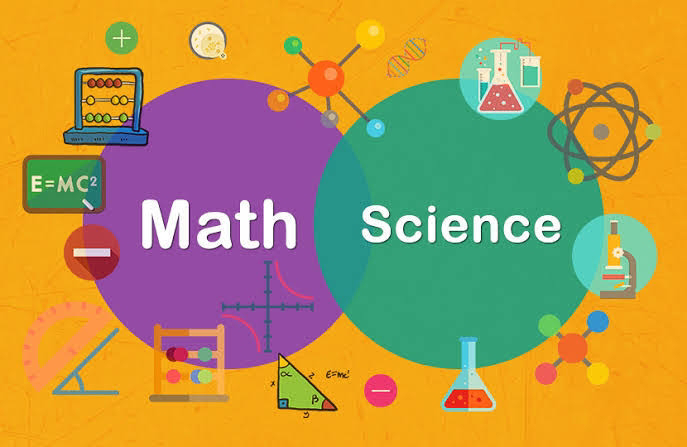Tat maths science padhdhati shastra ( પદ્ધતિશાસ્ત્ર )
Sure! Here's a model paper for a combined Mathematics and Science exam:
Mathematics and Science Model Paper
Section A: Mathematics
Instructions: Answer all questions in this section. Each question carries 10 marks.
Solve the following equation for x:
2x + 5 = 17
Find the value of y in the equation:
3y + 7 = 25 - 4y
Simplify the expression:
(2x - 3) + (4x + 5)
Solve the following inequality for x:
3x - 8 < 14
A circle has a radius of 5 cm. Calculate the circumference of the circle.
Section B: Science
Instructions: Answer all questions in this section. Each question carries 10 marks.
What is the atomic number of an element that has 8 protons and 8 neutrons?
Explain the process of photosynthesis and its importance in the ecosystem.
What is the difference between a physical change and a chemical change? Provide examples of each.
Describe the structure and function of DNA.
State Newton's laws of motion and provide an example for each.
Section C: Mathematics and Science Integration
Instructions: Answer all questions in this section. Each question carries 20 marks.
A rectangular garden has a length of 12 meters and a width of 8 meters. Calculate the area of the garden in square meters. If each square meter of the garden requires 5 liters of water per day for irrigation, calculate the total amount of water needed per day.
A car is traveling at a speed of 60 km/h. If the car travels for 2 hours and 30 minutes, calculate the total distance covered by the car in kilometers.
A chemical reaction occurs between two substances, A and B, producing substances C and D. Write a balanced chemical equation for this reaction.
The human body has a normal body temperature of 37°C. Convert this temperature to Fahrenheit.
Explain the concept of density and how it can be calculated. Provide an example.
Note: This model paper is for illustrative purposes only and may not reflect the actual format or content of a specific exam.
Tat maths science padhdhati shastra ( પદ્ધતિશાસ્ત્ર ) :- click here
Whats is science?
Science is a systematic and organized approach to studying the natural world and understanding how it works. It involves observing, experimenting, and analyzing evidence to develop knowledge, explanations, and theories about the universe and everything within it. Science aims to uncover the fundamental principles and laws that govern the physical, biological, and social realms.
The main goal of science is to generate knowledge through a process called the scientific method. This method involves several steps, including making observations, formulating hypotheses, designing and conducting experiments or investigations, collecting and analyzing data, drawing conclusions, and communicating the results.
Science is broadly divided into different disciplines or branches, such as physics, chemistry, biology, astronomy, geology, and many others. Each branch focuses on specific aspects of the natural world and uses distinct methodologies and tools to study and understand phenomena.
Scientists employ rigorous methods to ensure objectivity and reliability in their investigations. They rely on empirical evidence, logical reasoning, and critical thinking to build a body of knowledge that is testable, falsifiable, and subject to peer review and scrutiny.
Science is not limited to laboratories and academic settings. It has practical applications in various fields, including technology, medicine, engineering, environmental studies, and more. Scientific advancements have contributed to the development of new technologies, improved health care, sustainable practices, and a better understanding of our planet and the universe.
Moreover, science fosters curiosity, creativity, and a spirit of inquiry. It encourages asking questions, challenging assumptions, and exploring new frontiers. Science promotes evidence-based thinking and helps us make informed decisions and solve problems in our daily lives.
In summary, science is a systematic and evidence-based approach to understanding the natural world. It encompasses a wide range of disciplines and methodologies, with the ultimate aim of expanding knowledge, improving our lives, and advancing human understanding of the universe.
What is maths?
Mathematics, often referred to as "maths" (short for mathematics), is a field of study that deals with numbers, quantities, structures, patterns, and relationships. It involves using logical reasoning and critical thinking to solve problems and analyze abstract concepts. Mathematics is a fundamental discipline that is present in various aspects of our daily lives, including science, engineering, finance, computer science, and more.
In mathematics, there are different branches or areas of focus, such as algebra, geometry, calculus, statistics, and number theory, among others. Each branch has its own set of rules, principles, and techniques for solving problems and exploring mathematical concepts.
Mathematics provides a language and tools for describing and understanding the world around us. It helps us quantify and measure objects and phenomena, make predictions, analyze data, and create models to represent real-world situations. Mathematics is also an essential tool for other scientific disciplines, as it provides the foundation for understanding and formulating laws and theories.
Moreover, mathematics cultivates critical thinking skills, logical reasoning, problem-solving abilities, and analytical skills. It encourages precision, accuracy, and systematic thinking, which are valuable not only in academic settings but also in various professional fields and everyday life.
Overall, mathematics plays a crucial role in shaping our understanding of the universe, enabling technological advancements, and fostering logical thinking and problem-solving skills.


कोई टिप्पणी नहीं: